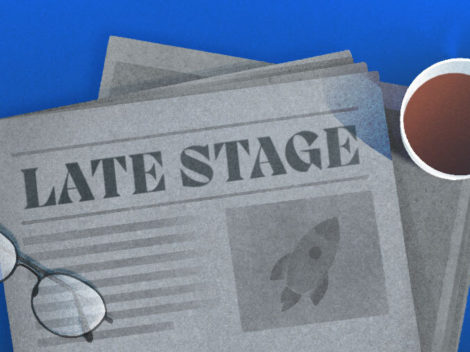Spotify’s 2016 results are out, giving us a window into the company’s financial performance.
Broadly, the highly popular music company grew its revenues by around €1 billion from 2015 to 2016, seeing its gross profit expand from €264.5 million to €450.5 million over the same time frame.
So, all things bright and beautiful? Not exactly.
Big Numbers
Spotify grew nicely in 2016, in line with expectations set by its regularly reported paid user growth. That figure is a workable proxy for the firm’s revenue, as it derives a large chunk of its top line from subscription fees.
To get a better grasp on Spotify’s performance, let’s observe how its revenue, gross profit, and gross margins grew, held up, or shrank across the last few years. (Spotify did not respond to submitted questions regarding its financial results by the time of publication.)
We’ll start with revenue and its year-over-year growth:
- Spotify 2014 revenue: €1.08 billion
- Spotify 2015 revenue: €1.93 billion (+77.9 percent)
- Spotify 2016 revenue: €2.93 billion (+52.1 percent)
Next up we have gross profit:
- Spotify 2014 gross profit: €174.29 million
- Spotify 2015 gross profit: €264.46 million (+51.7 percent)
- Spotify 2016 gross profit: €450.53 million (+70.4 percent)
And, between the two, we have gross profit margin:
- Spotify 2014 gross margin: 16.1 percent
- Spotify 2015 gross margin: 13.7 percent
- Spotify 2016 gross margin: 15.4 percent
It’s worth noting the decrease in gross margin in 2015, which likely stemmed from the comparatively sluggish growth of gross profits during that year.
Regardless, Spotify is not drawing a straight line north with its gross margins, which implies that it cannot always eke out revenue quality improvements. It’s a good sign that Spotify reversed 2015’s downtrend in gross margins, which brings last year’s results in line with the numbers from 2014.
From here we need to draw in the rest of the figures. We’ll start with non-cost of revenue operating expenses, which the firm breaks into “Product development,” “Sales and marketing,” and “General and administrative.” In aggregate, Spotify’s costs comprised by those three buckets worked out to:
- Spotify 2014 operating costs sans cost of revenue: €365.42 million
- Spotify 2015 operating costs sans cost of revenue: €500.76 million (+37.0 percent)
- Spotify 2016 operating costs sans cost of revenue: €799.94 million (+59.8 percent)
You can quickly tally up the company’s operational deficits in your head, but for 2014, 2015, and 2016, we can do the work for you: €191.1 million, €236.29 million, and €349.41 million, respectively.
Once we add in the rest of its costs, Spotify’s net loss totaled €539.21 million in 2016, more than double what it lost in 2015, and just under three times what it lost in 2014.
The news isn’t all bad, however.
Cashflow Positivity
On the good side of the accounting god’s ledger is cashflow. For Spotify, this particular set of numbers shows a potentially more positive result.
In fact, according to its financials, Spotify went from a €38.13 million operating cashflow deficit in 2015 to a positive €99.82 million cashflow result in 2016. That’s much better. To avoid translating more data into words, here’s the raw filing:
That’s much better. To avoid translating more data into words, here’s the raw filing with all the minutia you can handle:

The company can certainly say that, regarding its operational cashflow, it has made consistent progress even as its other vitals have been more mixed.
Future Costs
Media reports concerning Spotify’s results, as discussed above, noted something worth considering here. Here’s Recode’s discussion of Spotify’s future agreements:
In financial filings released this morning, Spotify says it has agreed to pay more than $2 billion in minimum payments to record labels over the next two years.
Recode goes on to note that the amount could rise, as the payments according to its sources are for several groups, but not all music labels.
However, while the dollar amounts are large when stacked next to its revenue, Spotify is getting something out of the deal. Recode reports that “terms of the new deals will give [Spotify] better royalty rates which will ultimately increase its margins.” If that bears out, Spotify could bolster its gross margins, increase its gross profit, and lessen its operational deficits. In turn, that could speed its pace towards the public markets.
Which it has a reason or two to get to.
So that’s the picture. Spotify is doing well at growing its business, but not as good a job at keeping those incomes in-house. Spotify is too big and important to die, especially given the scale of financial interests that have a vested interest in its survival. But in what shape it gets to public, and what sort of dilution that will entail, are open questions.

Stay up to date with recent funding rounds, acquisitions, and more with the Crunchbase Daily.









![Illustration of stopwatch - AI [Dom Guzman]](https://news.crunchbase.com/wp-content/uploads/Halftime-AI-1-300x168.jpg)

67.1K Followers